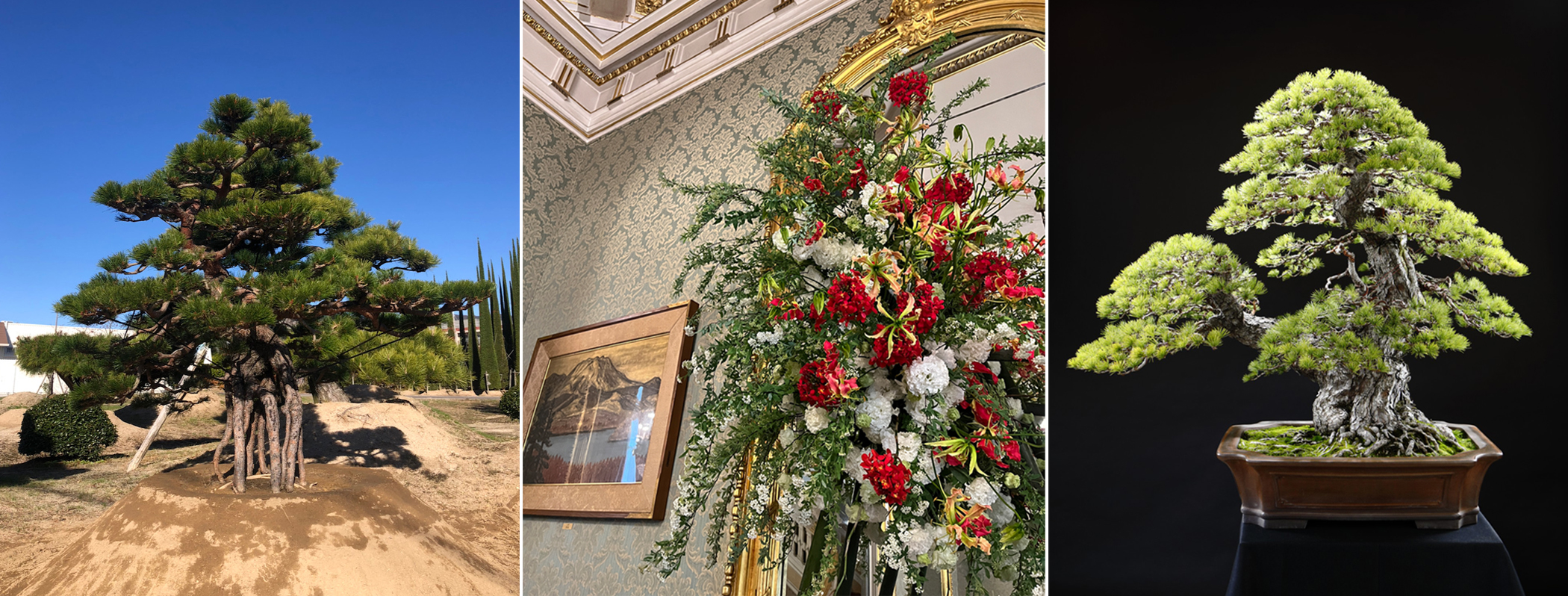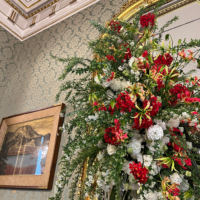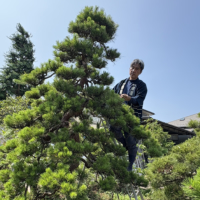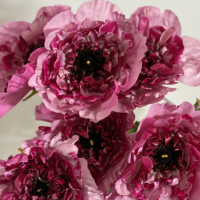The unique ways of enjoying Japan’s flora, such as ikebana, bonsai and traditional gardens, are already well known, but the Japan Flowers and Plants Export Association is working to promote shipments to further spread this culture, encouraging people worldwide to practice, enjoy and share the Japanese perspective on nature.
In a recent interview with The Japan Times, three JFPEA representatives shared their insights into the charm of Japanese arboriculture, cut flowers and bonsai, as well as the current state of exports.
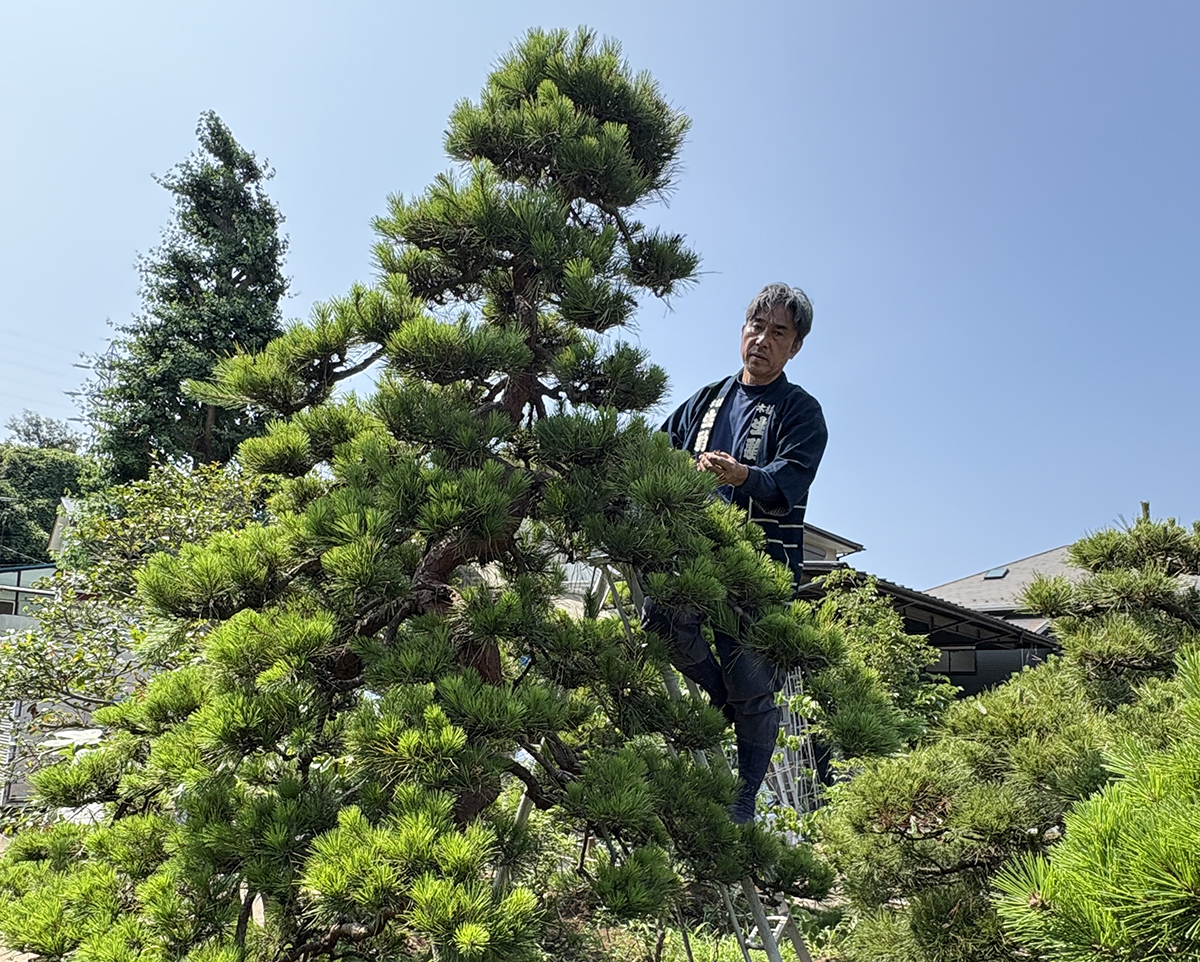
Ancient roots
“At the root of Japanese arboriculture is an ancient Japanese view of nature that is based on the belief that gods reside in all things,” said JFPEA Chairman Jun Ikoma.
Ikoma explained that this is a profound culture that extends far beyond mere cultivation, reflecting a philosophy of coexistence with nature and an appreciation for the unique individuality of each tree.
Japanese arboriculture employs various techniques to shape trees, including branch training, the aim of which is to guide branches toward specific directions or forms using ropes. There is also a technique called kujiki that involves twisting or bending branches to create an ancient appearance, and neagari, which exposes part of the tree’s roots above ground for a powerful and striking visual effect.
Trees in the wild are often exposed to harsh environmental and climatic conditions such as wind and snow that force them to bend and twist to survive. Ikoma said that Japanese gardens express the strength and beauty of these trees and a sense of deep reverence for nature through the concept of shukkei (miniature landscapes).
Japanese arboriculture aims to maximize each tree’s individuality and potential, helping them grow rather than shaping all trees into the same form.
“When pruning, the emphasis is not on the uniformity or beauty of the outer form,” Ikoma said. “Instead, we thin branches to allow light and wind to pass through, revealing the trunk in its beauty.”
There is also a practice that reflects the Japanese spirit of valuing objects and finding beauty in the power of nature. Kyoto’s Kitayama Daisugi cedar trees, for example, are repeatedly harvested for timber, which results in their unique, pedestal-like forms. These distinctively shaped trees are then repurposed for gardens. Thus, instead of abandoning a tree after a single use, it is efficiently reused multiple times, which sustains its life even after its primary purpose as timber has been fulfilled.
The effort and passion dedicated to each individual tree through Japanese arboriculture is remarkable, which contributes to the sense of reverence experienced when viewing a single tree.
However, with very few traditional gardens being created at homes anymore, traditional arboriculture techniques now tend to be practiced and applied on a limited basis, such as at temples. “The number of people who can carry on this tradition is declining, and passing on the techniques is an urgent issue,” Ikoma said.
Ironically, Japanese gardens are now bustling with foreign tourists, indicating a growing international interest in Japan’s arboriculture. Ikoma said he has even conducted training overseas to promote Japanese techniques. While tapping this demand seems crucial for the survival of Japanese arboriculture, however, quarantine issues stand in the way.
Ikoma explained that in some countries, it is possible to import plants from Japan if certain criteria are met, such as soil testing, but most of the products that garden tree producers export are not yet readily available to plant in gardens.
The industry is pushing to relax and improve the export regulations, but Ikoma said this will not happen overnight “because the rules vary so much from country to country.”
To support long-term negotiations for change, the industry is focusing on more promotion to sow the seeds needed to cultivate new markets.
“For example, some of the nursery owners who are members of our association are making efforts to bring Taiwanese buyers to Japan to let them experience the appeal of Japanese trees,” Ikoma said.
He stated that the Japanese spirit of cherishing and respecting the history of a single tree, preserving it for hundreds of years, and passing it on to the next generation is what makes Japanese arboriculture unique. “I hope that widespread understanding of this cultural value will lead to the preservation of the techniques,” he said.
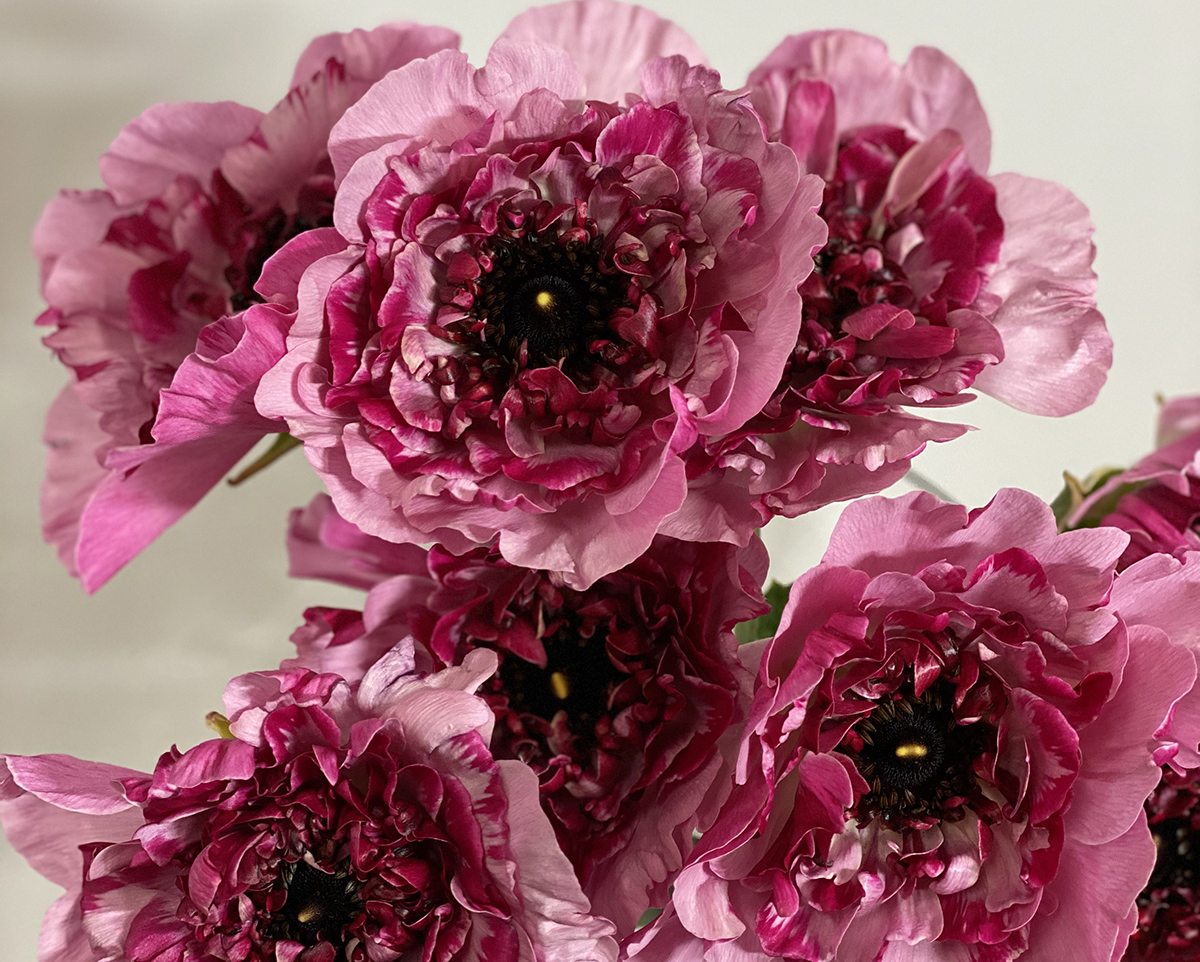
Market for flowers blooming
Japan’s cut flowers have unique characteristics that are driving their expansion into overseas markets. According to JFPEA Director Hokuto Sasaki, many producers engage in small, diversified production in comparison with their overseas counterparts.
One reason for this is that flower producers are mainly family-run businesses. While large-scale production is not feasible, they can differentiate themselves by offering greater variety. At the same time, due to the lower volume, they must aim to sell at higher prices. To do this, they continuously study, experiment and implement practices focused on improving quality, such as cultivating flowers with thicker, longer stems, larger blooms and more vibrant colors.
Another reason is that flower breeding has historically been active in Japan. According to the association, during the Edo Period (1603 to 1867), when hundreds of municipalities controlled their own administration and finances, producers actively engaged in breeding and improving agricultural and forestry products suited to local conditions — a tradition that continues to thrive today.
Sweet pea flowers, for example, mainly grown in Miyazaki, Oita, Okayama and Wakayama prefectures, now boast as many as 186 varieties and remain extremely popular.
“Their peak season from December to March perfectly aligns with increased international demand for occasions like Christmas, Lunar New Year, Valentine’s Day and International Women’s Day, making them the most exported flower by volume,” Sasaki said.
“High-quality sweet peas with long stems and abundant blooms are produced, and their light weight makes them particularly efficient to transport compared to other flowers, which is another reason they are well-suited for export.”
Currently, over 1,000 individual breeders, alongside seed companies and public research institutions, are engaged in breeding, resulting in the creation of more than 2,000 new flower varieties annually. Various contests and evaluations are held nationwide and at the prefectural level, providing numerous opportunities for showcasing new varieties and fostering interaction among flower breeders.
Over 2,000 species encompassing 40,000 varieties are currently in commercial production and distribution in Japan. According to the association, public flower research institutes are striving to further enhance their capabilities by utilizing advanced breeding technologies, such as biotechnology, radiation-induced mutations and genetic engineering. Many of the varieties developed by individual breeders are cultivated exclusively in Japan, giving them a competitive advantage in exports.
“For example, numerous varieties of ranunculus are developed in Japan every year. Among these, the Charlotte series, produced only in Japan, is so popular that supply cannot keep up with demand during peak season,” Sasaki said.
To meet demand both in Japan and overseas, we are taking advantage of the different harvest seasons in different regions to broaden the harvest period and are also focusing on varieties that can be supplied year-round. Where the peak season varies from place to place, efforts are being made to expand harvesting periods while also focusing on varieties that can be supplied all year long.
“Gloriosa is one of the few varieties that can be supplied year-round among those in high demand for export. It is popular in countries such as the U.S., China, Australia and Dubai. Through advanced cultivation techniques, high-quality products with longer, thicker stems and more blooms are being produced. There are also varieties like Zen and Southern Wind that are produced exclusively in Japan,” Sasaki said.
Some of the flowering trees and shrubs that benefit from controlled flowering techniques such as “forcing” and “inhibition” are also in high demand for export.
“These include cherry trees that are popular in Dubai, Spiraea cantoniensis (Kodemari) which sells well in the U.S., as well as Spiraea thunbergii (Yukiyanagi) and flowering quince (Boke). Demand is particularly robust during the Lunar New Year shopping season in some Asian countries,” he said.
Labor shortages and rising production costs are becoming major challenges for the cut flower industry. Despite concerns about initial investment, Sasaki said it is necessary to promote the introduction of smart agriculture technologies to meet overseas demand.
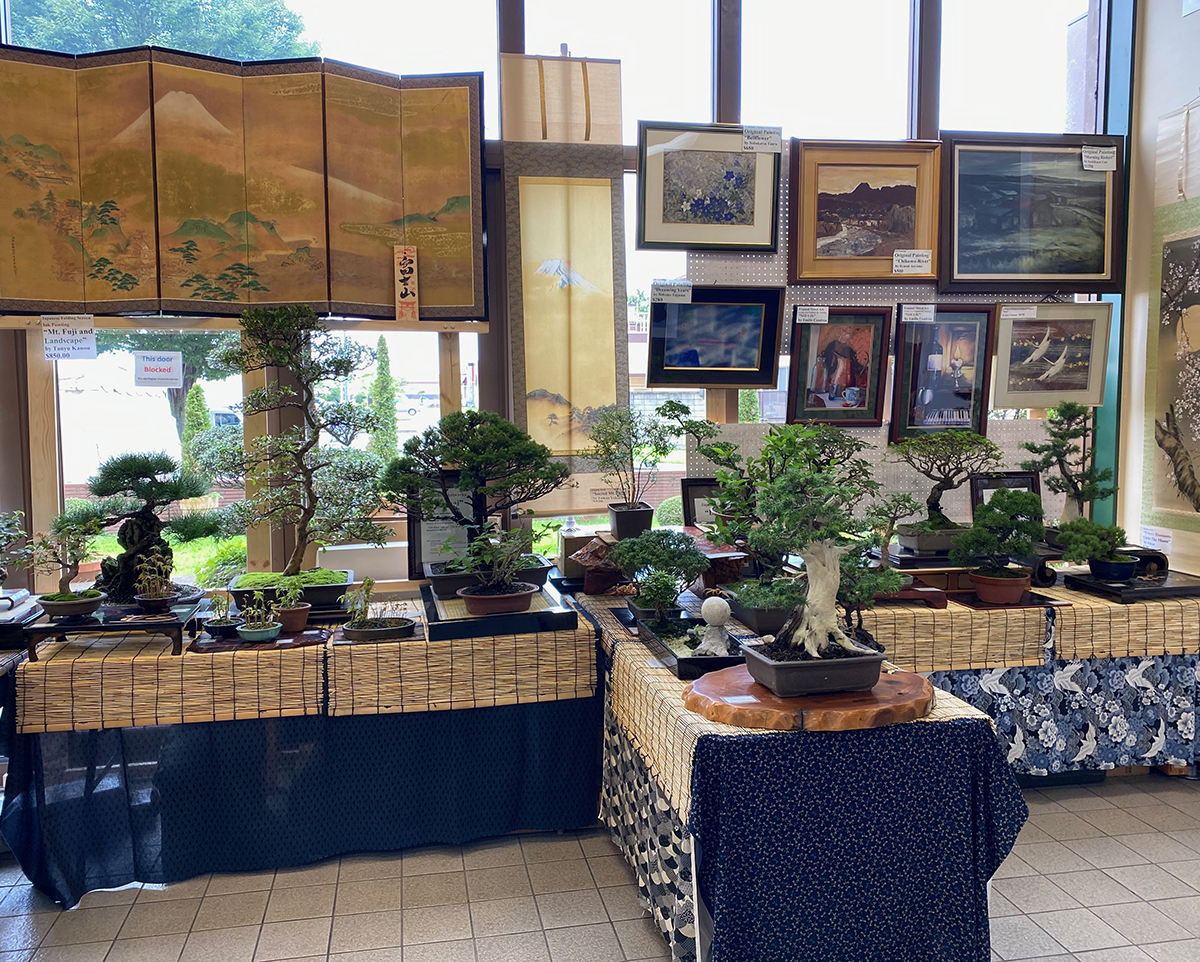
Small but enduring joy
Bonsai, another distinct form of Japanese horticulture, offers enjoyment of a longer duration than cut flowers and with less effort than transplanting trees to make a traditional Japanese garden.
The spirit of re-creating revered nature in miniature form also flows at the root of bonsai. In recent years, bonsai has gained popularity overseas as a form of “living art.” The Japanese term combines bon (meaning tray or pot) with sai (to cultivate or plant). The enjoyment and profoundness of this activity lies in nurturing the creation to live for many years, allowing one to feel the passage of time and the changing of the seasons while perceiving the world as a miniature landscape expressed in a small pot while imagining the vastness of nature.
Bonsai culture dates back to the Heian Period (794 to 1185),” said Yasuyuki Suzuki, a director at the Japan Bonsai Growers Cooperative. This cooperative, with a 95-year history, continues to produce nearly all the world’s bonsai masterpieces.
He explained that bonsai culture continued to evolve through Japan’s unique “aesthetics of subtraction,” which highlights beauty by removing superfluity.
“To feel that condensed nature up close, bonsai were usually displayed in the alcoves of Japanese-style rooms,” he said. They have also been placed in gardens, offering the enjoyment of arranging them to harmonize with the rest of the surrounding elements. Bonsai vary greatly in size, from over 60 centimeters tall to as small as a few centimeters.
Since then, Japanese lifestyles have changed; apartment buildings have become more common and fewer homes feature alcoves. Consequently, both the way bonsai are displayed and their use of space have changed, with smaller bonsai (typically under 20 cm) becoming more popular.
“In other countries, prominent leaders such as Steve Jobs have shown interest in traditional Japanese philosophies and concepts such as mindfulness, Zen and wabisabi (seeing beauty in imperfection), which has led to a growing interest in bonsai,” Suzuki said. He further noted that the long-standing popularity of collecting and displaying miniatures, especially in Europe and the U.S., may have also contributed to this trend.
Bonsai is not merely about displaying and watering plants. It involves observing and utilizing each tree’s unique characteristics and individuality and designing it through the careful pruning and bending of its branches. Given this artistic depth, many beginners likely want to learn by studying examples or references.
Bonsai exhibitions are perfect places for such learning. Various bonsai exhibitions take place every year across the country.
“There are exhibitions that offer hands-on workshops, bonsai-viewing tours and seminars for international visitors who wish to obtain bonsai-related licenses,” Suzuki said. Some also feature auctions, marketplaces and demonstrations by masters of the craft.
Currently, bonsai are exported to countries ranging from China and Vietnam to the European Union. “To further promote exports, the cooperative is actively working with Japan’s Ministry of Agriculture, Forestry and Fisheries regarding the relaxation of plant export quarantine conditions for bonsai, while negotiating with the governments of various countries,” Suzuki said, emphasizing that the U.S. market, where both popularity and demand are especially high, is the highest priority.
Industry organizations such as the JFPEA are working to address these challenges, supported by the expectations of international enthusiasts, so Japanese plants can be widely enjoyed around the world.

This article is sponsored by the JFPEA. For more information, visit https://www.jfpea.jp/information.html



